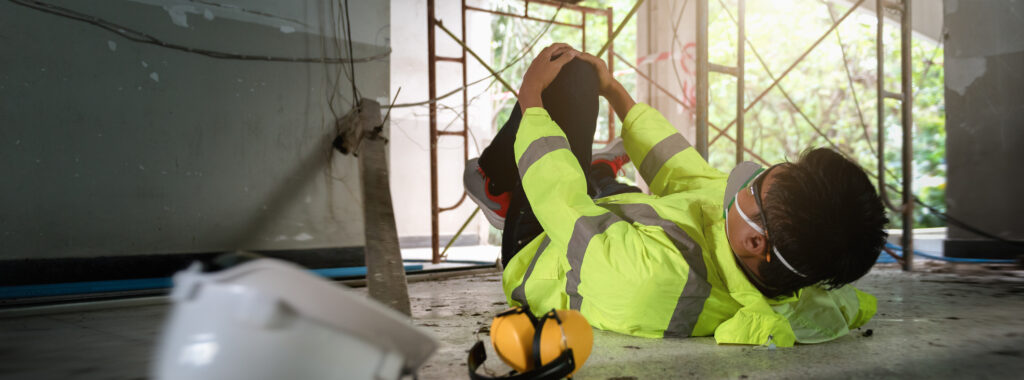
What Scaffold Accidents Are Usually Attributed To: Common Causes and Prevention
Scaffold accidents are typically attributed to factors such as planking or support giving way, inadequate fall protection systems, improper construction practices, and OSHA violations, resulting in over 4,500 scaffolding injuries and 88 deaths annually across construction sites in the United States. According to extensive Bureau of Labor Statistics data and OSHA investigations, approximately 72% of such accidents stem from just three primary failure modes that are entirely preventable through proper safety measures and regulatory compliance.
Most scaffold accidents are preventable through proper safety protocols, worker training, and strict adherence to Occupational Safety and Health Administration standards.
This guide examines the primary attribution factors behind scaffolding accidents, evidence-based prevention strategies, and legal considerations for construction companies.
Understanding Scaffold Accident Attribution and Safety Requirements
Scaffold accident attribution refers to the specific structural failures, safety violations, or environmental factors that investigation teams identify as the direct cause of injuries or fatalities on construction sites. These attribution factors are systematically documented by OSHA investigators, insurance companies processing workers’ compensation claims, and legal teams representing injured workers in construction accidents.
OSHA plays a central role in scaffold safety regulations through its standards in 1926 Subpart L, which mandate specific requirements for fall protection systems, structural integrity, and worker training. When scaffolding accidents occur, OSHA investigations consistently reveal that most incidents involve violations of these established safety regulations.
Statistical analysis reveals that 72% of scaffold accidents involve planking or support failures, while scaffolding hazards account for 25% of all construction deaths from elevated platforms. Nearly 90% of fatal scaffold-related incidents involve at least one major OSHA violation, demonstrating the direct connection between regulatory compliance and accident prevention.
OSHA Standards and Legal Framework
OSHA 1926 Subpart L establishes comprehensive requirements for scaffold safety, including mandatory guardrails or fall arrest systems for workers above 6 feet, regular inspections by qualified persons, and specific load capacity limits for scaffolding systems. These standards form the legal framework that courts use to determine liability in construction accidents.
The relationship between OSHA violations and accident attribution is crucial in workers’ compensation cases and personal injury litigation, as regulatory noncompliance often establishes clear liability for construction companies and, potentially, scaffold manufacturers.
Types of Scaffolding Involved in Accidents
Self-supporting scaffolds, welded tubular frames, ladder scaffolds, and mobile scaffolds each present distinct attribution patterns in accident investigations. Mobile scaffolds frequently fail due to tipping or brake failures, while supported scaffolds typically fail due to inadequate bracing or foundation problems.
The connection between scaffold type and common attribution factors helps safety managers focus prevention efforts on the most relevant hazards for their specific construction work environments.
Primary Attribution Factors for Scaffold Accidents
Analysis of thousands of scaffold accidents reveals the dominant attribution factors that account for the vast majority of injuries and fatalities on construction sites. These factors often interact, with multiple attribution causes present in severe injury cases.
Structural Failures and Improper Construction
Planking and support giving way represents the leading attribution factor, involved in 72% of scaffold accidents according to the Bureau of Labor Statistics analysis. These structural failures typically result from defective materials, improper assembly by unqualified workers, or degraded components that fail under normal working loads.
Missing guardrails create fall hazards that account for 77% of scaffolding accidents, while inadequate bracing and unsecured attachments allow scaffolds to tip or collapse unexpectedly. Foundation problems, particularly on uneven surfaces or inadequate base plates, contribute significantly to structural integrity failures.
Improper scaffold erection by maintenance workers without proper training frequently leads to inadequate load distribution, insufficient tie-offs to tall buildings, and failure to follow manufacturer specifications for scaffolding systems.
Lack of Fall Protection Systems
The absence of adequate fall protection systems, including guardrails or fall arrest systems, directly contributes to the majority of serious injuries from scaffold accidents. Personal fall arrest systems, when present, often suffer from defective components or improper installation that render them ineffective during falls.
Many workers lack proper training in the use of fall protection equipment, while construction companies frequently fail to provide adequate safety equipment for workers operating above the minimum 6-foot height requirement. Environmental conditions, such as wind or rain, can compromise even properly installed fall protection systems if workers haven’t received training on weather-related safety protocols.
Equipment Defects and Manufacturing Issues
Malfunctioning brakes on mobile scaffolds cause numerous accidents when workers attempt to reposition equipment or when environmental factors cause unexpected movement. Defective pulleys and hoisting mechanisms fail under normal loads, dropping materials or causing sudden platform shifts.
Bent, damaged, or corroded scaffold components often remain in service despite compromising structural integrity, while substandard manufacturing creates inherent weaknesses that lead to catastrophic failures. Regular inspections by qualified persons can identify many equipment defects before they cause accidents.
Operational and Environmental Attribution Factors
Operational factors involving human decision-making and environmental conditions create complex attribution scenarios that often amplify the risk from structural or equipment deficiencies. These factors frequently determine whether minor safety violations result in near-misses or serious injuries.
Identifying Overloading Attribution
- Calculate platform load capacity: Verify manufacturer specifications and compare against actual worker weight plus materials and safety equipment
- Document material placement: Record the location and weight of tools, supplies, and safety nets to identify uneven distribution patterns
- Assess dynamic loads: Factor in movement forces from workers, wind loads, and impact forces from falling objects or falling debris
- Verify foundation capacity: Ensure base supports can handle total system weight plus safety factors for environmental conditions
Comparison: Human Factors vs. Environmental Factors
| Attribution Factor | Human Factors | Environmental Factors |
| Primary Causes | Inadequate training, ignoring safety protocols, improper PPE use | Wind, rain, ice conditions, proximity to power lines |
| Attribution Rate | 45% of scaffold accidents | 28% of scaffold-related incidents |
| Prevention Focus | Worker training, safety practices enforcement | Weather monitoring, environmental hazard assessment |
Environmental factors, such as unsafe working conditions near power lines or during severe weather, significantly increase accident severity, while human factors are more commonly the initial cause of the safety failure. Construction companies must address both categories simultaneously to significantly reduce scaffold-related accidents.
Targeted Prevention Strategies to Protect Workers, Reduce Legal Liability
- Implement daily inspection protocols conducted by qualified persons with documented training in scaffold safety standards and structural integrity assessment.
- Develop supporting procedures that include comprehensive checklists covering guardrails, platform conditions, structural connections, and environmental hazards, plus immediate removal from service for any components showing wear or damage.
- Establish regular safety audits and comprehensive worker training programs that address specific OSHA regulations for fall protection, load limits, and environmental conditions. These programs should include hands-on training on personal fall arrest systems, recognition of scaffolding hazards, and emergency procedures for construction site accidents, with documented certification for all workers.
- Develop clear weather protocols that define safe working limits and outline alternative work procedures to protect workers during environmental challenges. Risk assessment criteria should address wind speeds, precipitation, temperature effects on structural integrity, and visibility conditions that could compromise safe access to elevated platforms.
Scaffold accidents are usually attributed to preventable factors: structural failures involving planking or support giving way (72%), inadequate fall protection systems, and OSHA regulations violations that compromise worker safety. Understanding these attribution patterns enables construction companies to implement targeted prevention strategies that protect workers while reducing legal liability and medical expenses associated with serious injuries.
Contact the Law Office of Nicholas E. Tzaneteas
If you are injured as a result of a scaffolding accident, contact the Law Office of Nicholas E. Tzaneteas, specialists in construction site and personal injury accidents in New York. If you’ve suffered an injury due to no fault of your own, you may be eligible for substantial financial compensation for medical bills, lost wages, and pain and suffering. You may be entitled to benefits under workers’ compensation insurance and damages as a result of negligence from the liable parties.
Nicholas Tzaneteas has many years of experience in practice areas dealing with insurance companies, workers’ compensation claims, employers, and holding the responsible party accountable. Contact us for a free consultation.
Additional Resources
OSHA 1926 Subpart L Reference Materials: Complete regulatory text, inspection checklists, and compliance guidance for construction companies implementing safety standards.
Scaffold Load Capacity Tools: Engineering calculation worksheets and safety equipment specifications for determining safe working loads and fall protection requirements.
Emergency Response Procedures: Incident documentation templates, medical care coordination protocols, and accident scene preservation guidelines for scaffold-related incidents.

